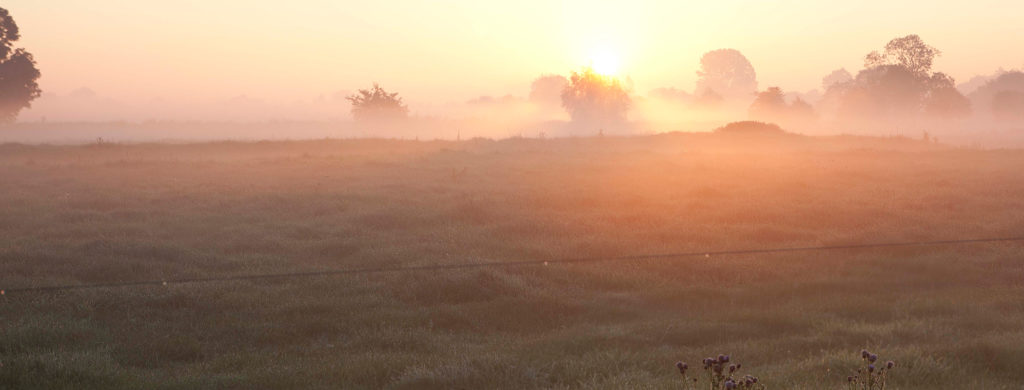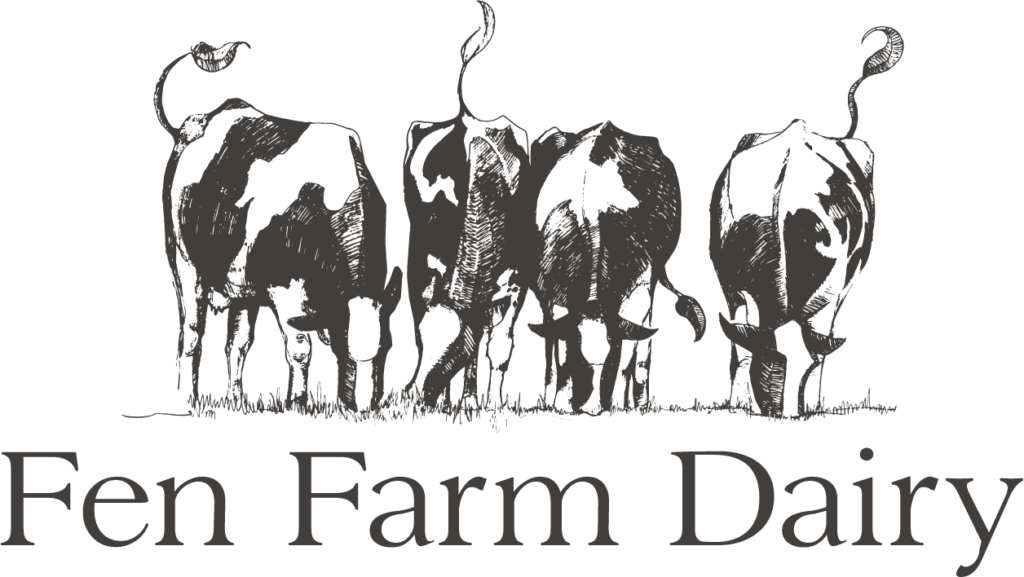No products in the cart.

Greener Farming
We believe we have a responsibility to be excellent stewards of our planet, the land we farm and the delicate ecosystems that live here. We are on a mission to become greenhouse negative and we are working continuously towards this goal. Here are some of the things we are doing to be responsible dairy farmers:
A DEDICATED ROLE:
We take our climate responsibility seriously so we have employed a dedicated person, our fabulous Emily Evans, to head up our mission to achieve greenhouse negative emissions. Emily is in charge of researching and implementing new learning and technology at Fen Farm. She keeps us on track towards our goals and helps to identify new opportunities for improvement.
Solar Power:
We run a 200kw solar panel system with battery storage, on the roofs of our barns. Combined with our other on-farm renewable energy sources, this new system brings our farm and food production site to around 70% renewable energy self sufficiency.
This clever little system is a bit of a game-changer. Here’s how it works:
On sunny days, the solar panels generate more energy than our business needs. Once our immediate energy needs are satisfied, the panels begin to top up our new 50kw batteries.
When our batteries are fully charged, we can stream excess energy back into the National Grid, meaning we will be paid a little for generating electricity for others.
When the sun isn’t shining, for example during the early morning and evening milkings, our batteries kick in and power the farm.
When it’s utterly dark and miserable in the depths of winter, we have the flexibility to sometimes switch over and top up from the National Grid using night rate, which amounts to a big saving for our business. During this time, we are still supported by our other renewable energy systems, including our cow-poo-powered heat exchange.
COW POO POWERED Heat Exchange:
Cow poo produces a LOT of heat as is breaks down. We don’t like wasted heat so we’ve made a little invention. We’ve laid two miles of water pipes into the concrete beneath our cow’s winter yard so that the heat from the muck on the floor warms the cold water to around 40˚C as it passes through the pipes. These same pipes then travel through the milking parlour and cheese production areas, collecting the waste heat from our refrigeration units, as well as the natural heat extracted from our fresh warm cows milk as it goes through the rapid cooling system.
Once this journey is complete, it’s just a small energy to-up (using our solar panels) to get the water to our target of 90˚C, to be used for washing down our milking parlour and food production areas.
Reduced Fuel Consumption:
Free range cows have a much lower carbon footprint. The more grass they eat, the less fodder has to be grown for them and the fewer tractors are involved. Of course, pastures need management but this takes a lot less machinery and fuel than importing foreign feedstuffs. We keep our cows outside and grazing for as much of the year as is physically possible. Of course, they have to come inside for a bit when the fen’s flooded during the winter, or when it’s just too cold for the grass to grow but working with the good British climate, we are doing what we can. When the herd are inside for the winter, we feed them as much of a home-grown diet as possible, to greatly reduce the food miles associated with buying in lorry loads of feed from across the globe.
REDUCED EMMISSIONS:
We are in the process of retro-fitting our tractors with new devices which will significantly reduce our fuel emissions. More details on this to follow soon!
Reduced food miles:
All of our products are made right here on our Suffolk farm, just meters away from our milking parlour and grazing pastures. We make sure that our beef animals are slaughtered and sold locally where possible and of course our raw drinking milk has only travelled a few metres from milking parlour to cow-print-shed, before you buy it.
SOIL HEALTH:
We are working hard to understand our unique soils and adapt our farming practices to promote healthy ecosystems. We believe that animal agriculture, done right, is a key element in the development of sustainable food production and a healthy planet. This is part of the full circle of farming and our responsibility to future generations.
LAND REGENERATION:
We are actively regenerating large areas of our farmland for wildlife. When I say “actively” I actually mean that we are leaving them alone and letting nature have some space. We are currently leaving-be over 60 acres of ex-arable land, which is a mixture of naturally developed meadowland and regenerating young native oak forest.

